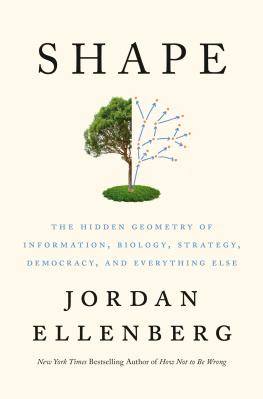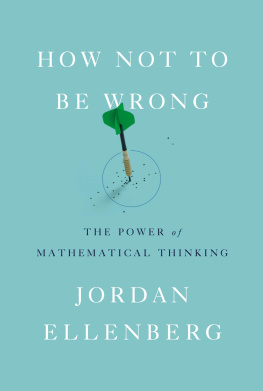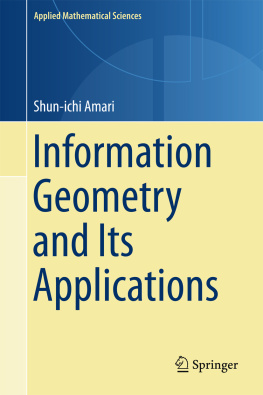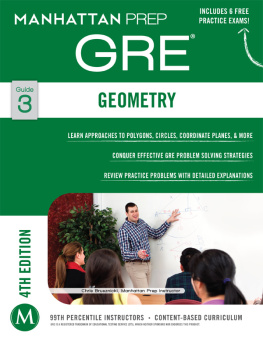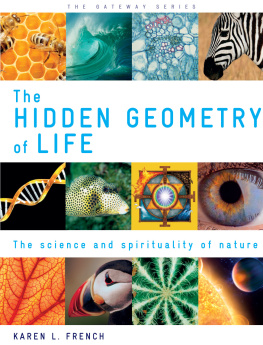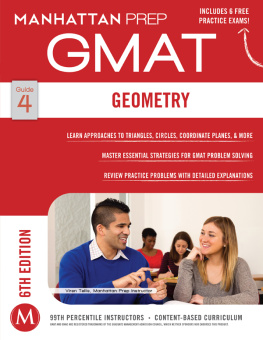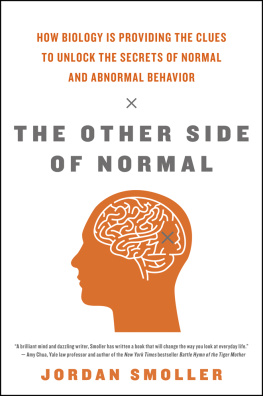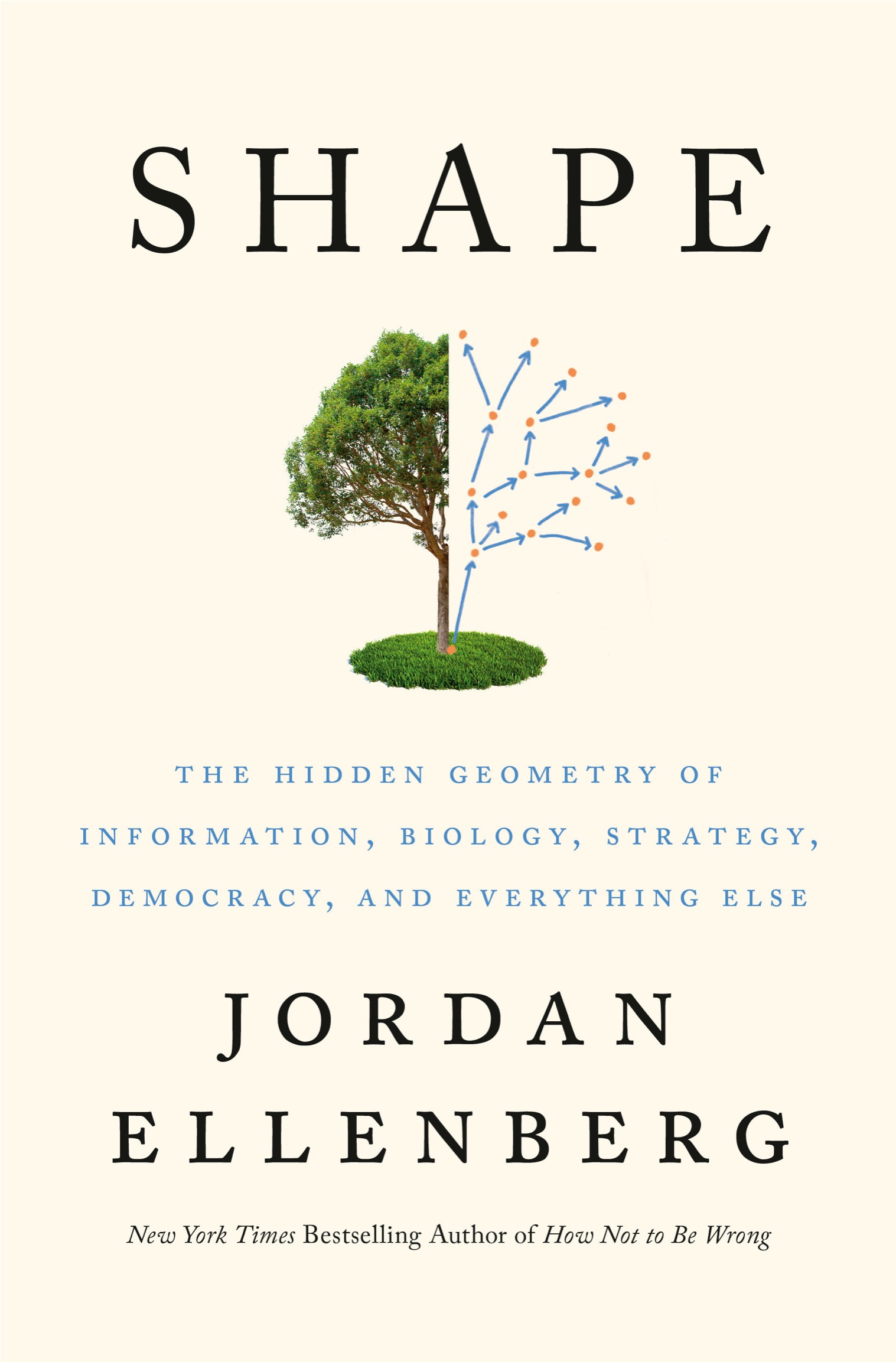ALSO BY JORDAN ELLENBERG
How Not to Be Wrong
The Grasshopper King
PENGUIN PRESS
An imprint of Penguin Random House LLC
penguinrandomhouse.com
Copyright 2021 by Jordan Ellenberg
Penguin supports copyright. Copyright fuels creativity, encourages diverse voices, promotes free speech, and creates a vibrant culture. Thank you for buying an authorized edition of this book and for complying with copyright laws by not reproducing, scanning, or distributing any part of it in any form without permission. You are supporting writers and allowing Penguin to continue to publish books for every reader.
Maps on by Caitlin Bourbeau
Portions of this book appeared in different form as How Computers Turned Gerrymandering Into a Science and Five People. One Test. This is How You Get There in the New York Times; as The Supreme Courts Math Problem and Building a Better World Series on Slate.com; and as A Fellow of Infinite Jest in the Wall Street Journal.
Flash Cards from Grace Notes by Rita Dove. Copyright 1989 by Rita Dove. Used by permission of W. W. Norton & Company, Inc.
Geometry from The Yellow House on the Corner, Carnegie Mellon University Press, Pittsburgh, PA. 1980 by Rita Dove. Reprinted by permission of the author.
constitutes an extension of the copyright page.
library of congress cataloging-in-publication data
Names: Ellenberg, Jordan, 1971 author.
Title: Shape : the hidden geometry of information, biology, strategy,
democracy, and everything else / Jordan Ellenberg.
Description: First. | New York : Penguin Press, [2021] | Includes bibliographical references and index.
Identifiers: LCCN 2020054440 (print) | LCCN 2020054441 (ebook) | ISBN 9781984879059 (hardcover) | ISBN 9781984879066 (ebook) | ISBN 9780593299739 (export edition)
Subjects: LCSH: Geometry. | Shapes.
Classification: LCC QA446 .E45 2021 (print) | LCC QA446 (ebook) | DDC 516dc23
LC record available at https://lccn.loc.gov/2020054440
LC ebook record available at https://lccn.loc.gov/2020054441
Designed by Amanda Dewey, adapted for ebook by Cora Wigen
Cover design: Stephanie Ross
pid_prh_5.7.0_c0_r0
To the inhabitants of space in general
And CJ and AB in particular
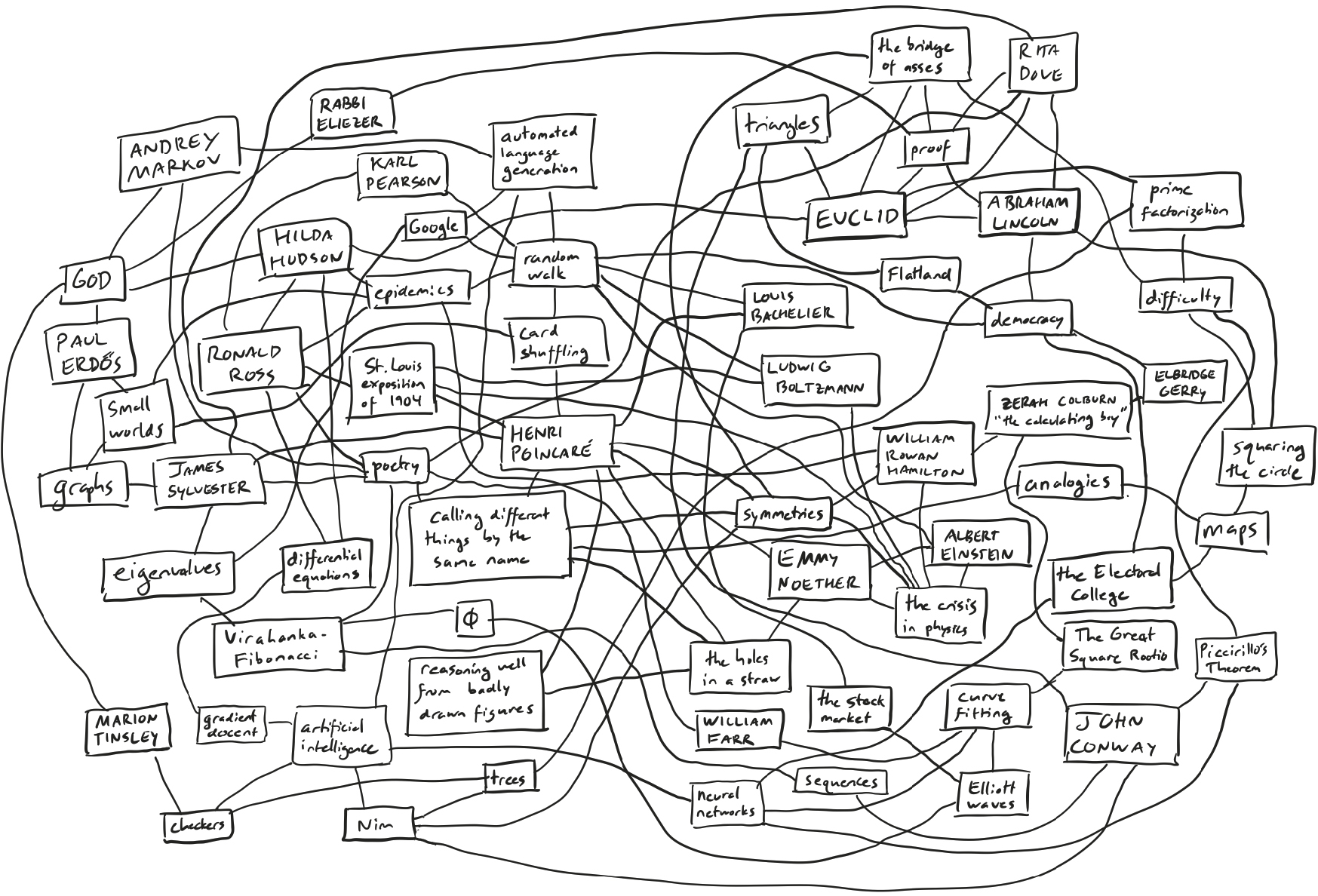
INTRODUCTION
Where Things Are and What They Look Like
I am a mathematician who talks about math in public, and this seems to unlock something in people. They tell me things. They tell me stories I sense they havent told anyone in a long time, maybe ever. Stories about math. Sometimes sad stories: a math teacher rubbing a kids ego in the mud for no reason but meanness. Sometimes the story is happier: an experience of abrupt illumination that burst open a childs mind, an experience the grown-up wanted to find a path back to, but never quite could. (Actually, this one is kind of sad, too.)
Often these stories are about geometry. It seems to stand out in peoples high school memories like a weird loud out-of-scale note in a chorus. There are people who hate it, who tell me geometry was the moment math stopped making sense to them. Others tell me it was the only part of math that made sense to them. Geometry is the cilantro of math. Few are neutral.
What makes geometry different? Somehow its primal, built into our bodies. From the second we exit hollering from the womb were reckoning where things are and what they look like. Im not one of those people who will tell you everything important about our inner lives can be traced back to the needs of a shaggy band of savannah-dwelling hunter-gatherers, but its hard to doubt that those folks had to develop knowledge of shapes, distances, and locations, probably before they had the words to talk about them. When South American mystics (and their nonSouth American imitators) drink ayahuasca, the sacred hallucinogenic tea, the first thing that happensokay, the first thing that happens after the uncontrollable vomitingis the perception of pure geometric form: repeating two-dimensional patterns like the latticework in a classical mosque, or full three-dimensional visions of hexahedral cells clustered into pulsating honeycombs. Geometry is still there when the rest of our reasoning mind is stripped away.
Reader, let me be straight with you about geometry: at first I didnt care for it. Which is weird, because Im a mathematician now. Doing geometry is literally my job!
It was different when I was a kid on the math team circuit. Yes, there was a circuit. My high schools team was called the Hells Angles and we filed into every meet in matching black T-shirts with a boom box playing Hip to Be Square by Huey Lewis and the News. And on that circuit I was well-known among my peers for balking whenever presented with show angle APQ is congruent to angle CDF, or the like. Not that I didnt do those questions! But I did them in the most cumbersome possible way, which meant assigning numerical coordinates to each of the many points in the diagram, then grinding out pages of algebra and numerical computation in order to compute the areas of triangles and lengths of line segments. Anything to avoid actually doing geometry in the approved manner. Sometimes I got the problem right, sometimes I got the problem wrong. But it was ugly every time.
If theres such a thing as being geometric by nature, Im the opposite. You can give a geometry test to a baby. You present a series of pairs of pictures; most of the time the two pictures are of the same shape, but every third time or so, the shape on the right-hand side is reversed. The babies spend more time looking at the reversed shapes. They know somethings going on and their novelty-seeking minds strain toward it. And the babies that spend more time gaping at the mirrored shapes tend to score higher on math and spatial reasoning tests when theyre preschoolers. Theyre quicker and more accurate at visualizing shapes and what they would look like if rotated or glued together. Me? I lack this ability almost completely. You know the little picture on the credit card machine at the gas station that shows you how to orient the card when you swipe it? That picture is useless to me. Its beyond my mental capabilities to translate that flat drawing into a three-dimensional action. Every single time, I have to run through each of the four possibilitiesmagnetic stripe up and to the right, magnetic stripe up and to the left, magnetic stripe down and to the right, magnetic stripe down and to the leftuntil the machine consents to read my card and sell me some gas.
And yet geometry is felt, generally, to be at the heart of whats required for real figuring in the world. Katherine Johnson, the NASA mathematician now well-known as the hero of the book and movie Hidden Figures, described her early success at the Flight Research Division: The guys all had graduate degrees in mathematics; they had forgotten all the geometry they ever knew.... I still remembered mine.

